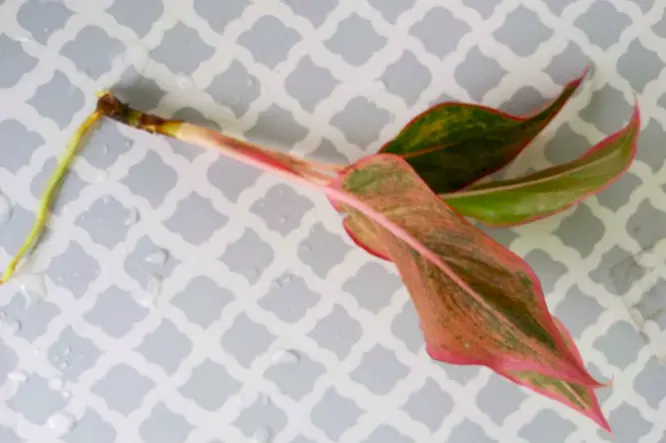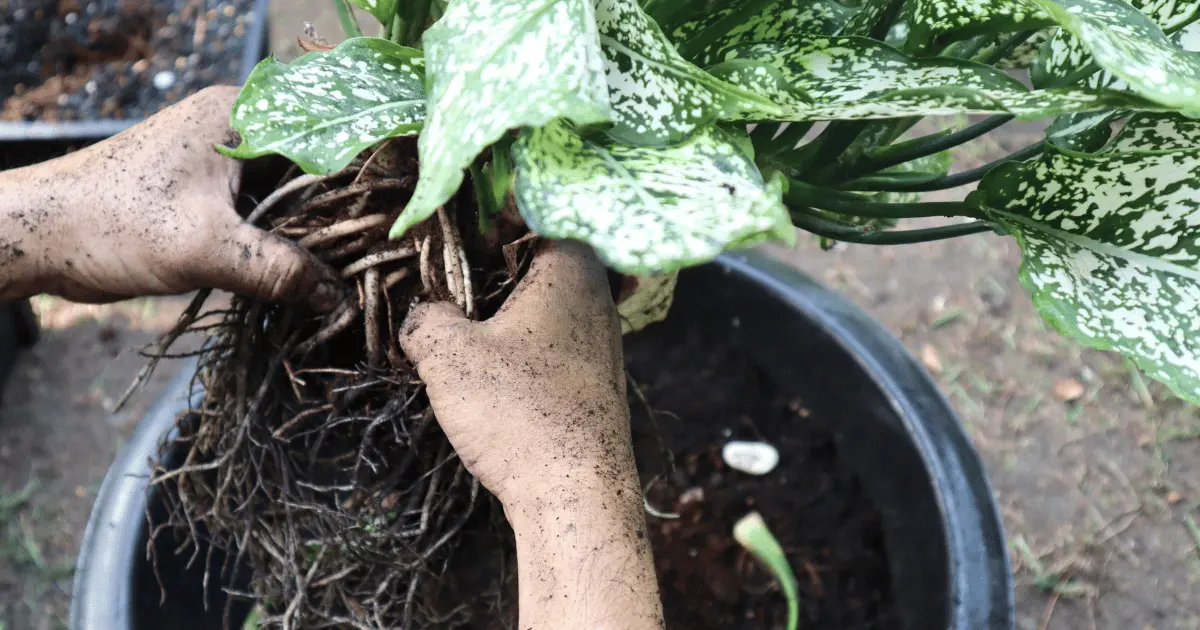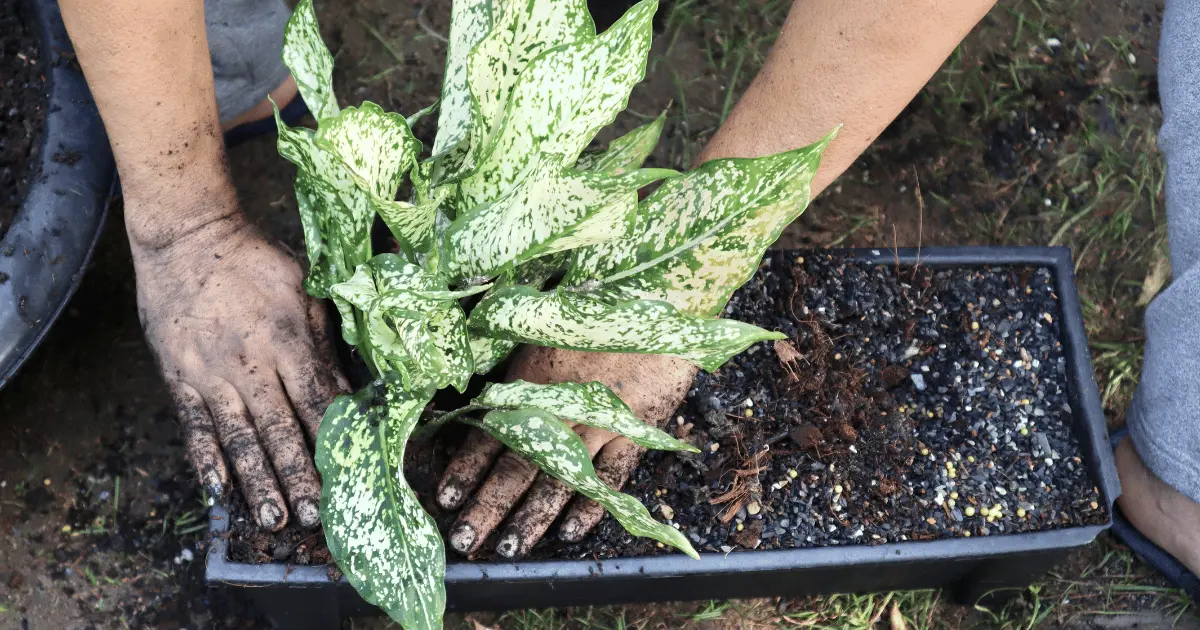Aglaonema varieties or Chinese Evergreens were first domesticated in tropical New Guinea and subtropical Asia as a symbol of class, elegance, and pride among ancient royal families. Today, their royalty is seen in their delicate blooms and tender foliage, mostly propagated as indoor house plants or outdoor decorative garden plants.
They are mostly enduring perennial flowering plants that grow both upright or recumbent and invasive shoots which often grow new roots while crawling on the ground. Their broad leafy foliage bears a coronet of silvery or greenish pointy blades in a speckled array. They’re such amazing beauty, often found atop tabletops and office desks in their early propagation days.
Ways to Propagate Aglaonema Plants
The easiest way to propagate Chinese Evergreen plants is by growing their stem cuttings in water or a prepared soil mix potting. You need not worry about the level of experience or skill required to get it done because the process is simple enough, even for a newbie or first-time propagator. Allow me to show you the steps in as few words as possible.
Preparing your Aglaonema Cuttings

First, choose the right stems to make the cuttings; Adventurous and leggy cuttings are ideal; each cutting should be 4-6 inches long, with 2-3 leaves on its apex tips. You can make as many cuttings as you see fit from a single plant as long as there’s room to grow them.
Cut off the stems in a clean swipe at a 45° angle to the parent shoot. If you want them to root faster, place them on a dry-level surface for a couple of hours until their cut tips get callused. You can root the cuttings in water or directly in a potting medium.
Rooting Chinese Evergreen Cuttings in Water
I always enjoy watching tender cuttings grow new green roots in water. Although the process takes 2-3 weeks before some results can be expected, it’s worth the wait when they finally emerge.
- Fill up a potting glass vase or any transparent container with water and slide the cuttings in, slanting them by the sides.
- Place the set-up beside a brightly illuminated window where they can receive sufficient filtered sunshine daily. The water may become murky occasionally, so you should replace it regularly.
- Once the cuttings have grown roots 1-2 inches long, they’re ready for transplanting.
Rooting your Chinese Evergreen Cuttings in a Potting Mix

Your cuttings will easily grow in a potting medium and won’t require any transplanting when they do, which is a great way to save time and stress for soft cuttings. Prepare your soil mix potting by pouring the homemade soil mix into it until it is almost full.
If you’re using a rooting hormone, dip the calloused tips of your cuttings into the rooting hormone before planting. Otherwise, make 1-inch deep holes around the potting soil surface and insert the cuttings into the holes.
More soil mix will be needed for the cuttings to take a fixed shape. After planting, water the pot thoroughly until the excess water flows down the drain holes on the pot, and place it on a flat surface beside a brightly illuminated window frame.
Chinese Evergreen Cuttings rooted in a potting medium take 2-3 weeks to root.
It’s a common practice to sometimes root several cuttings together in the same water vase or soil mix potting if that’s the way you want them; feel free to separate the rooted cuttings once they’ve grown new roots about one or two inches in length.
Choosing the Best Environment to Propagate Chinese Evergreens
Most Aglaonemas are effectively tolerant to slight variations in the prevailing atmospheric conditions, although they prefer and adapt easily in a dimly illuminated room. They generally prefer to be potted in a brightly lit environment with plenty of indirect sunshine to grow healthy and lovely foliage and blooms.
Potting them in warm and moist places will easily encourage them to bloom ahead of time. They will always prefer to be placed beside the window that faces westward and southward to get the maximum amounts of sunshine they can take.
It would be best if you always had a balanced plan for how much they’re exposed to daily. When exposed to excessive hours of direct sunshine, their leaves may suffer sunburns and scorch. On the other hand, potting them in an overly dim space with little bright light daily will cause yellowing of the leaves.
The optimum temperature range for them to grow attractive leaves and lovely flowers is between 20°C to 25°C (68°F to 77°F), although they’ll remain active in temperatures as low as 12.77°C (55°F); anything below this level is harmful to them. When the average sunshine limit isn’t exceeded, they keep growing new luxuriant deep-green foliage adorned in silvery patterns.
Watering your Chinese Evergreen Pots
Chinese Evergreens naturally love the coolness of moist potting; you should do your best to preserve them from dehydration and drought. However, it would help if you always allowed the top soil surface to become dry and feel powdery before watering them, to prevent any possibility of over-watering.
They’ll need to be watered more frequently in summer because they’re growing actively then; you should water them once every one or two weeks. They’re known to display minimal activities for the winter season since it’s their resting season. For this reason, you shouldn’t water them more than once a fortnight.
Their delicate leaves can also do with some periodic misting to keep them glossy and brightly humid. Please ensure they’re not left sitting in water for days at a stretch, as that might cause their leaves and roots to rot. Since they’re not so fussy about their care, you can water them by bottle-spraying, misting, bottom watering, or using a humidifier.
You’ll know your Chinese Evergreens are receiving too much water, more than they require when their stems and leaves appear bleached, bloated, slushy, and pulpy; at this point, you should cut down on their watering frequency.
Choosing the right Potting Medium to Grow your Chinese Evergreen Pots

Their low maintenance requirements make them easily grown in any potting mix that’s loose, well-aerated, quick draining, and enriched in organic substances, especially compost. You can easily create a perfect blend of homemade lightweight potting mix for them by including Peat moss and perlite in any commercial cactus potting mix or succulent soil mix.
It’s best to propagate them in new pots once every two or three years, right before they start becoming leggy. They generally could do better in bigger pots because the compost in their soil mix might begin to trap excess water in the bigger pots. Repotting them in a similar-sized pot helps to confine their growth within the set limits, at least for a while.
Toxicity of Chinese Evergreens
They’ve been singled out as mildly toxic to animals, birds, and humans. When consumed, serious health consequences like swollen mouth could result, especially the tongue and lips, painful swallowing, vomiting, diarrhea, and slabbering have also been recorded. More serious cases might also involve damage to the kidneys and liver.
They demonstrate serious toxicity to humans and animal pets like cats, dogs, and horses; you should be careful working with their leaves and shoots because a slight direct contact with them or their extracts could trigger various signs of toxication.
To summarize, Aglaonema garden plants are a family of evergreen herbaceous succulent tropical perennials that grow furrowed foliage in a characteristic whitish or silvery outline. They are traditionally recognized as heralds of good fortune, wealth, and affluence.
That’s not just some BS; these patient garden plants will try your patience, growing only slowly, needing little care for their propagation.
They also help to remove air impurities and toxic gases, making them efficient air purifiers. As they do that, they simultaneously fix clean, breathable oxygen into the air surroundings so we can breathe clean, fresh Air; this property has earned them a spot in NASA’s list of Air purifying garden plants.
